Recover Apple keyboard aluminum after spills
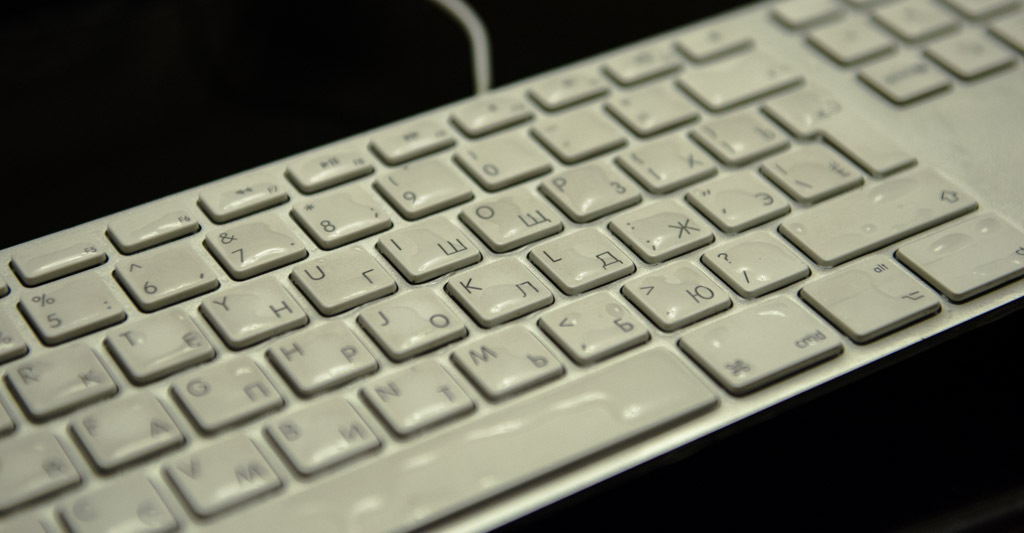
It all started with the fact that once I was flooded with red wine from a wired keyboard from Apple (MB110RS). The maximum that was done before when I found out about this was only the removal of external traces of liquid.
It should be noted that this keyboard is not in vain considered one of the most convenient of its kind in principle: easy, quiet key travel, completely free and relaxed hands when working behind it, nice design.
So, it’s precisely its main advantage - the easy movement of the keys - after the wine got under them, the keyboard almost lost: the buttons in the bottom row especially began to stick - Shift, Ctrl, Alt, Cmd and first of all Space. It is understandable - due to the tilt of the keyboard, the liquid that has got rushed to its lower part, and the wine, from which the water had time to evaporate, left its dry residue on the contact pads, elastic bands and under the keys. In fairness, it is worth saying that even after that the keyboard continued to work.
It was decided to restore. But! After 10 minutes of searching, it turned out that the keyboard is completely non-separable - not a single screw! Like a layer cake, it consists of a printed circuit board and an aluminum frame glued to the bottom by means of films and foil.
However, you can even stick it up with a hairdryer:
But in its final form, it will be an unattractive sight.

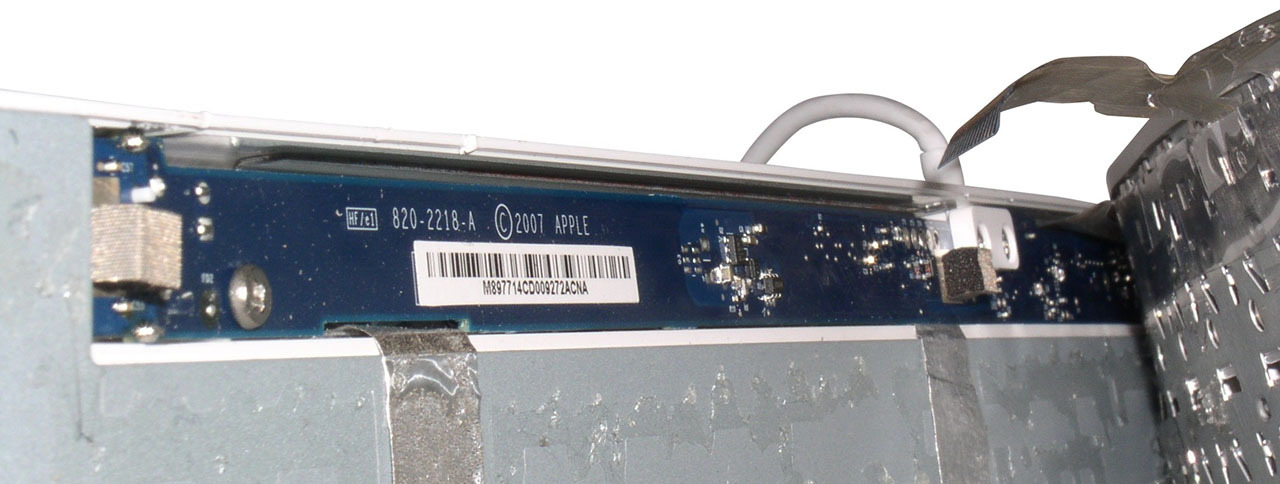
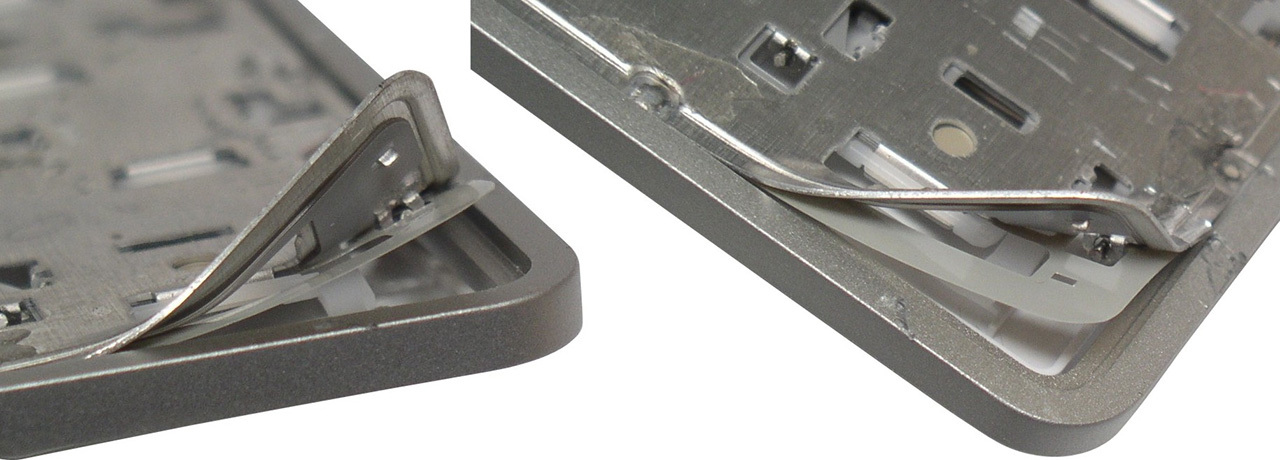
Autopsy Apple keyboard aluminum

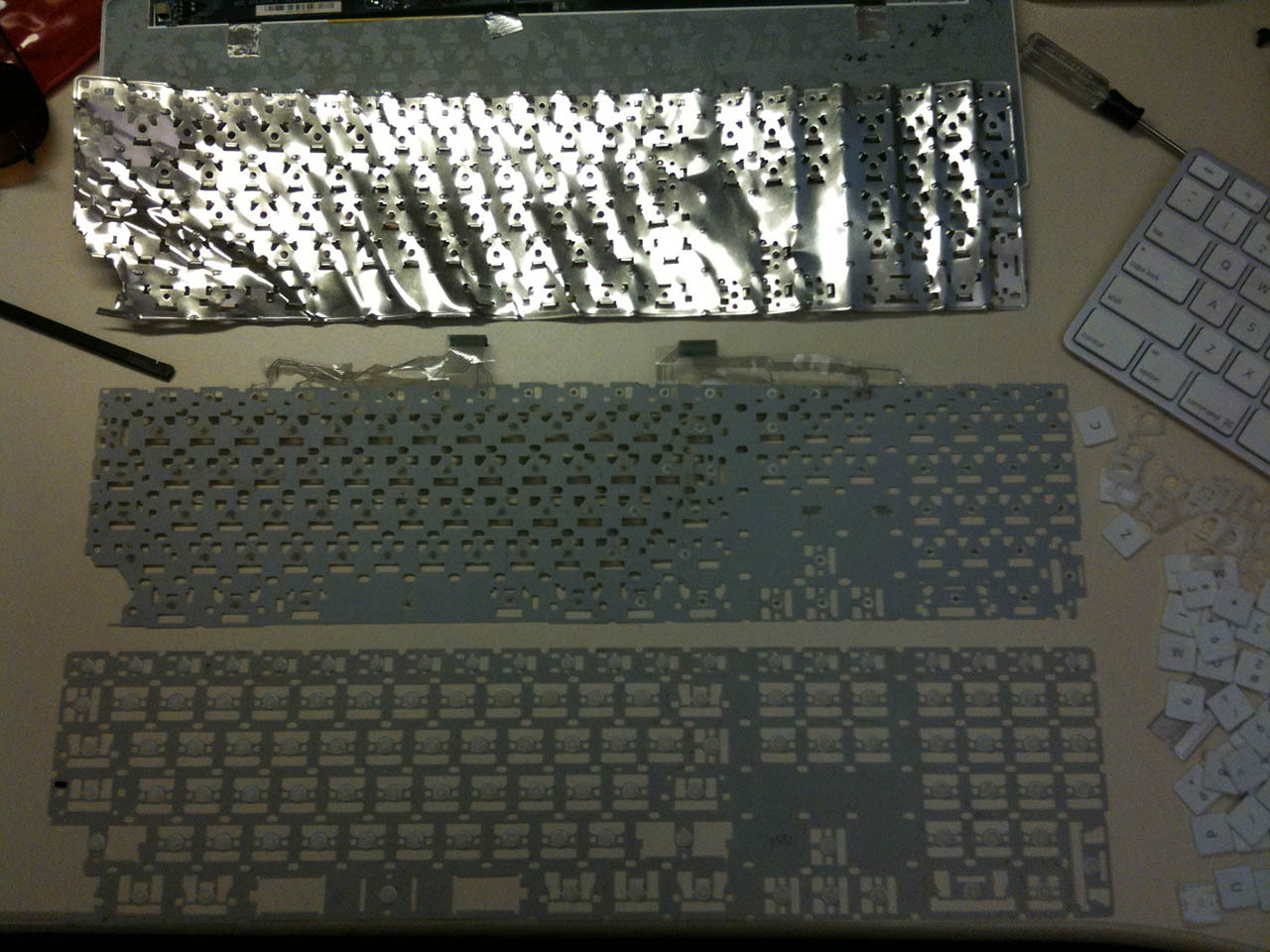

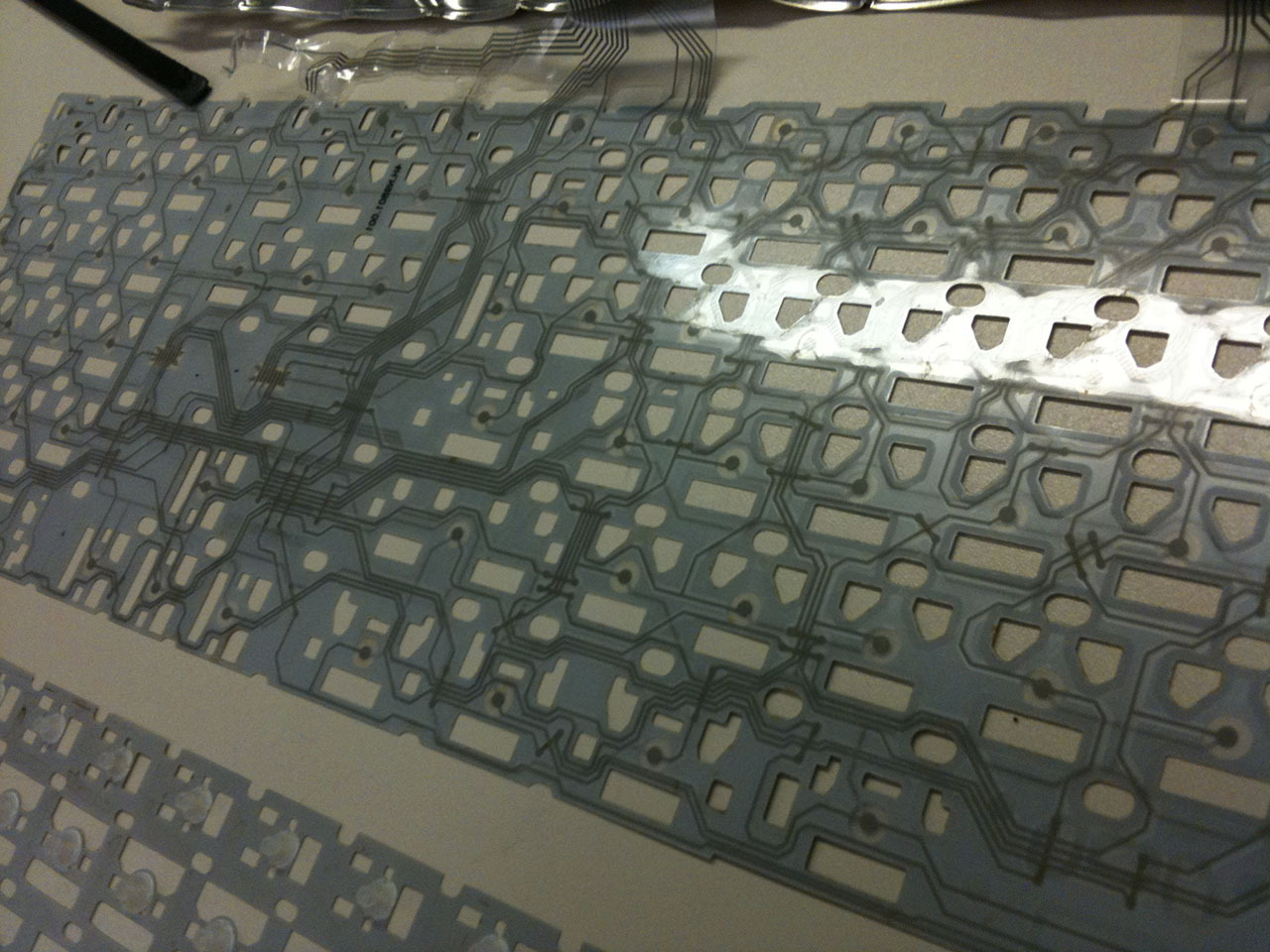
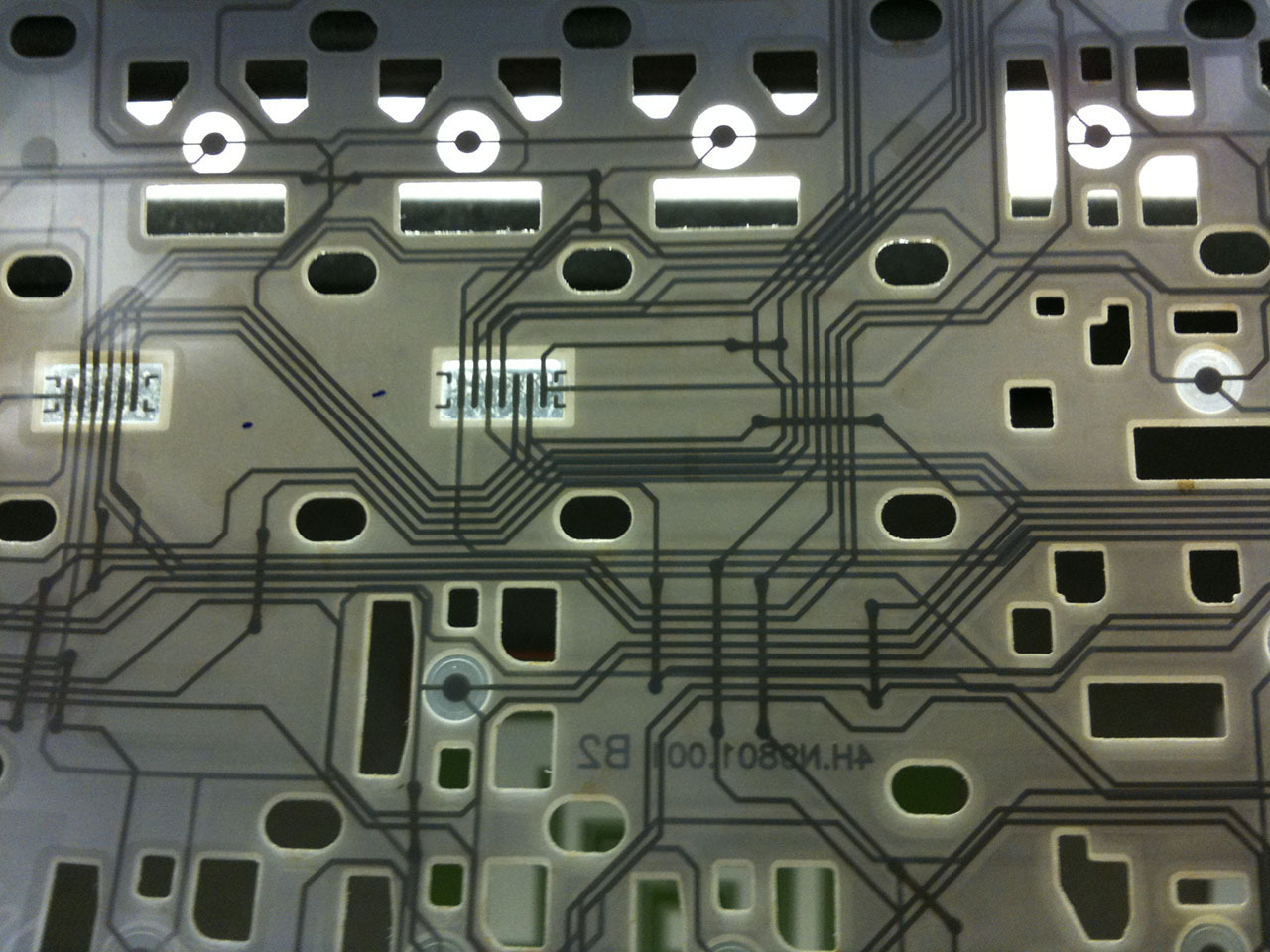
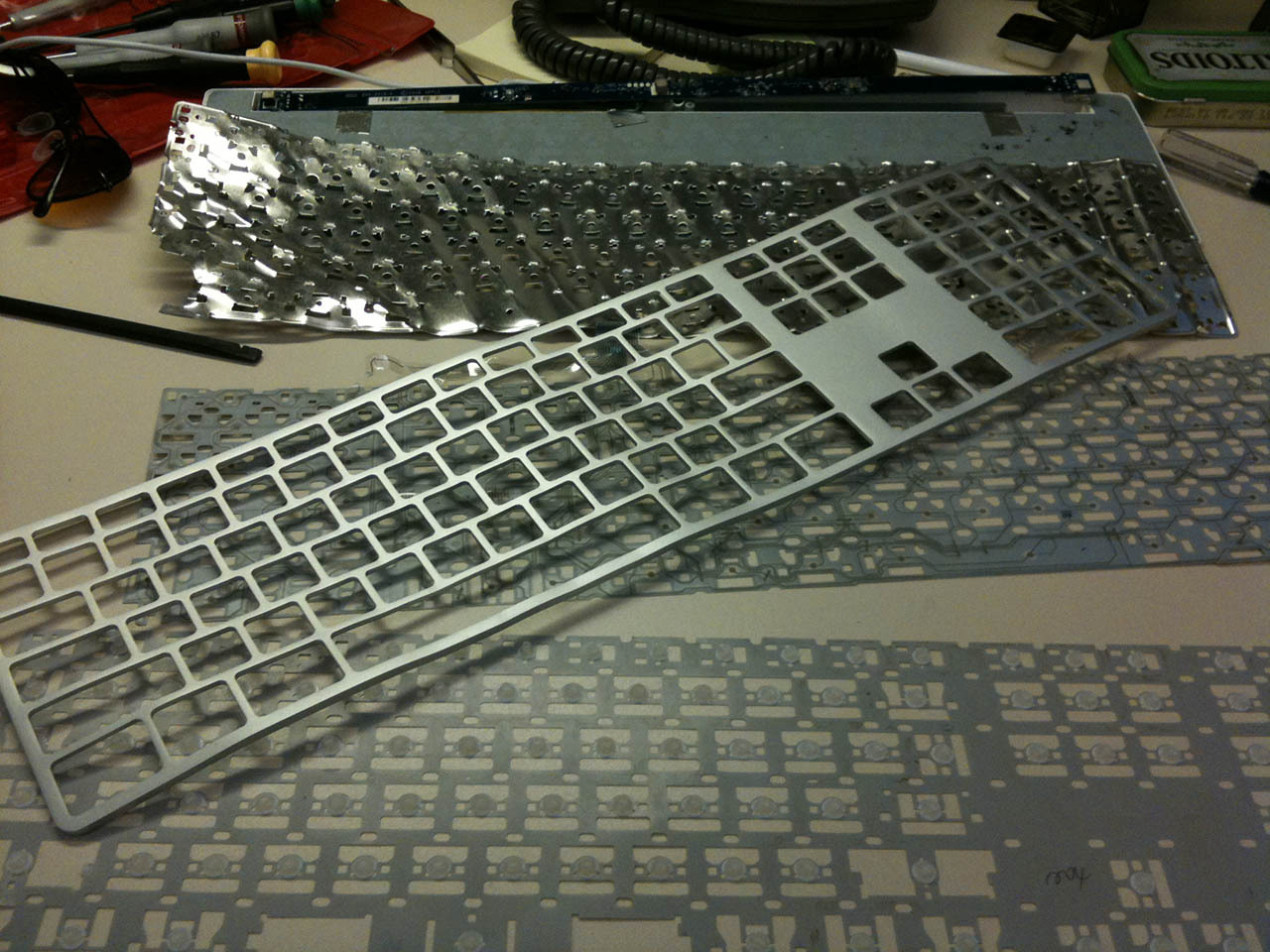







Believe the sad experience of all those who have tried this path on their own, the end result is not worth it. And then there are no guarantees that everything will be able to be collected back in its original form.
Of course, for easy cleaning of dirt under the keys, it is enough to remove them and remove dirt. But to remove each of the 110 keys in turn, it seemed to me too tedious procedure.
In short, I decided to choose a clumsy and neat path at the same time - just bathe in water and then dry well.
So, how I restored the performance of the Apple keyboard after getting liquid:
- Find a clean wide tray / tray for immersion handling. I used a regular oven pan, previously well washed.

- Heat a liter of 3-4 filtered water from the tap. The temperature is such that the hand was still bearable.
- We put the clave in the pan and slowly and evenly pour it with warm water so that it will fill all the voids inside (I pressed the keys to release air from the cavities). Turn over several times so that the water rinses everything inside.
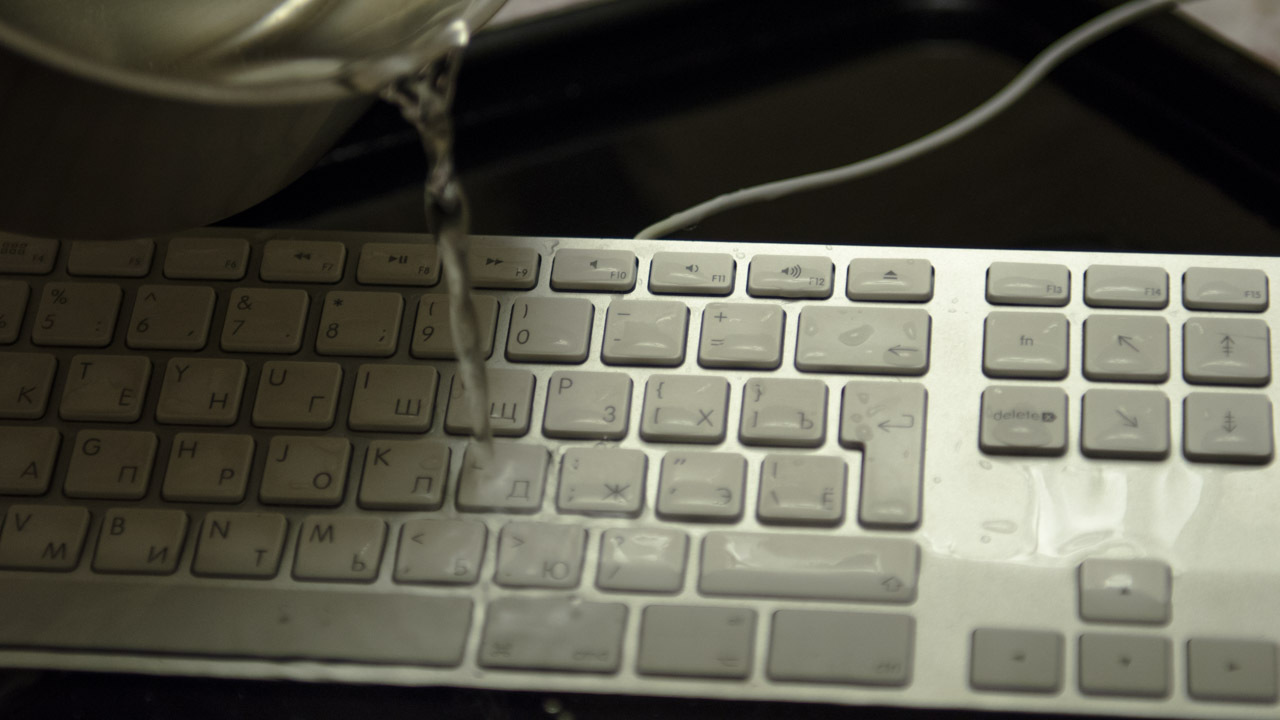

- If desired, at this time, the keys themselves can also be walked with a brush. But make a reservation - I did not use any cleaning products.
We drain the waste water from the pan.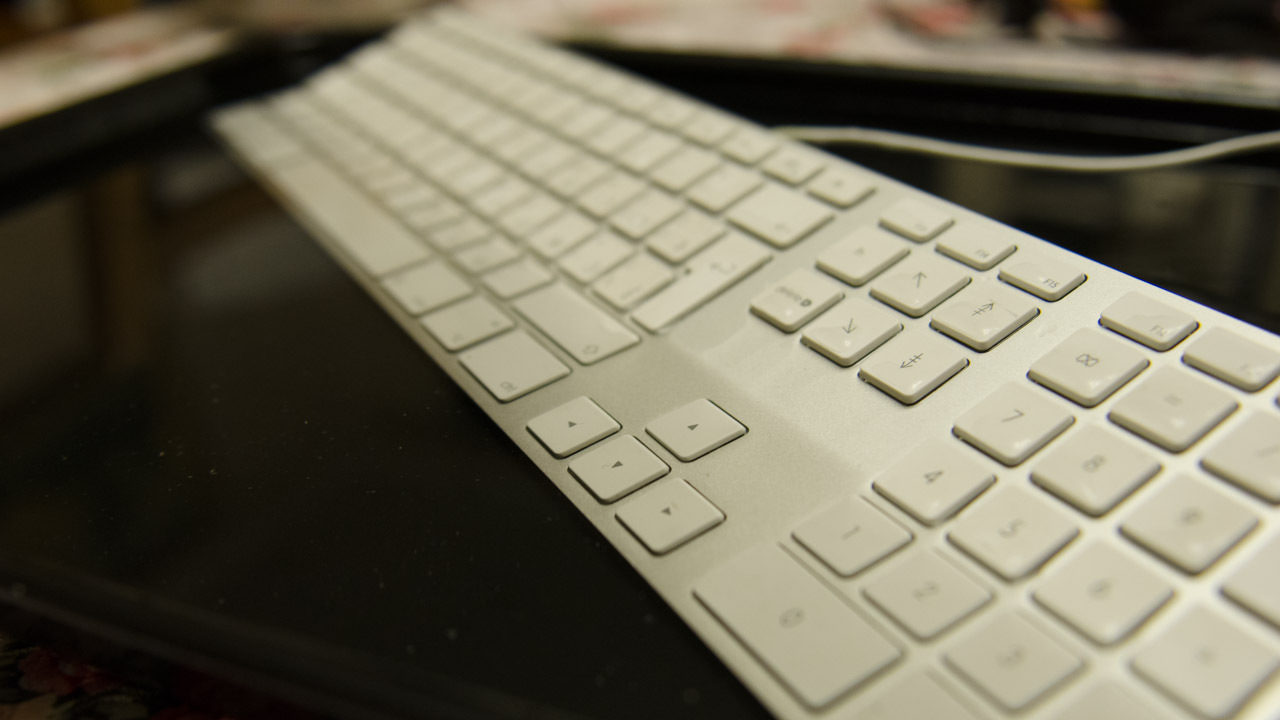
- Now it is advisable to wash all the salts that remained from the contaminants, and were also introduced with ordinary water. For this, I used a mixture of 1 part of isopropyl alcohol (isopropanol) in 2 parts of distilled water. The total volume is 0.5 liters.
Perhaps only distilled water is enough, but with isopropyl alcohol it will subsequently evaporate more actively, which is what we need in the end.
Fill the keyboard evenly with liquid. All that pours past is poured from a pallet into a glass and spilled on the keyboard again. 3-5 minutes wait and drain all the liquid from the keyboard.
On safety rules when working with isopropyl alcohol: we
try not to inhale vapors, do not bury it in our eyes, do not consume it inside; skin contact is not fraught with anything, just rinse off.
- It's time to dry our clave drowned. We shake out with a sharp sweep all visible drops of water, wipe with a dry rag. We dry on both sides with an ordinary hairdryer for 10-15 minutes from a distance of 20-30 cm, warming evenly. Do not overheat! The temperature criterion is the tolerance of the hand when touching the body.
At the same time, you can check the quality of washing: I took off the space bar - traces of red wine no matter how it happened. We remove hairs, animal hair and other debris that accumulates in such large areas with a cotton swab.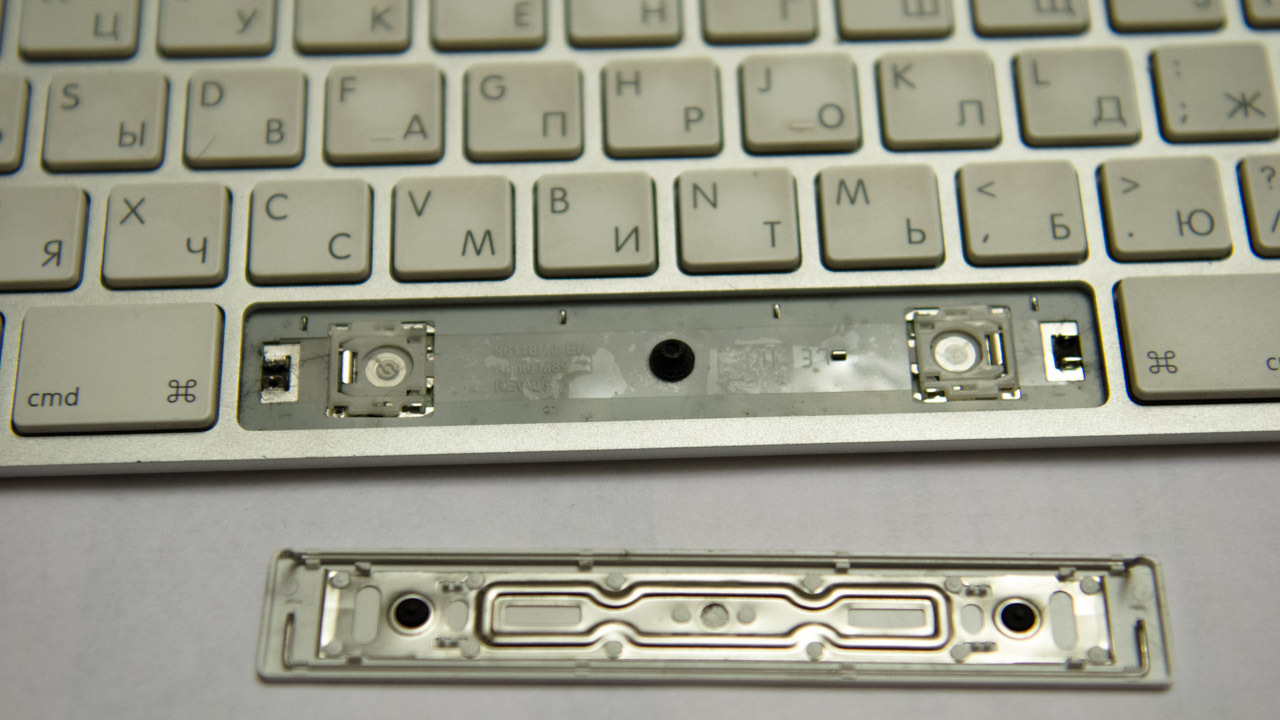
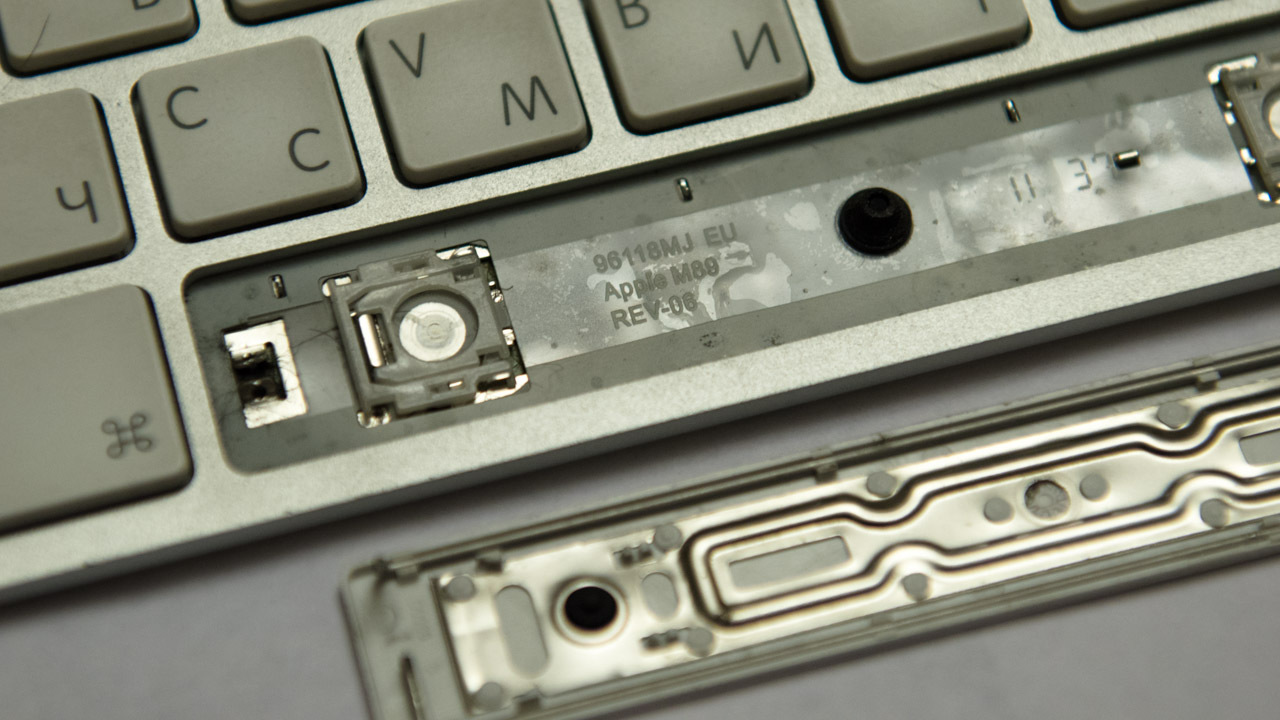
- Now the final stage of drying - you need to remove numerous traces of moisture between the films, under the keys, on the keyboard circuit board. Ideally, use silica gel for this, but not everyone has it. It is much easier and with no less success to use conventional rice that has long been established in this role.
To do this, I preliminarily dried rice for 2-3 minutes (300-500 g is enough), sprinkled with a centimeter layer in a ceramic plate, in a microwave (so that it draws moisture into it even more). Under the influence of microwaves, dry rice first whitens, then quickly turns yellow and even starts to smoke, so every 60 seconds I recommend stirring to dry evenly and to avoid burning.
After waiting for the rice to cool to an acceptable temperature, we take the keyboard and place it in a sealed large bag. We evenly distribute rice on its surface and tightly fold the package, isolating it from external air. Leave for 1-2 days in a warm place.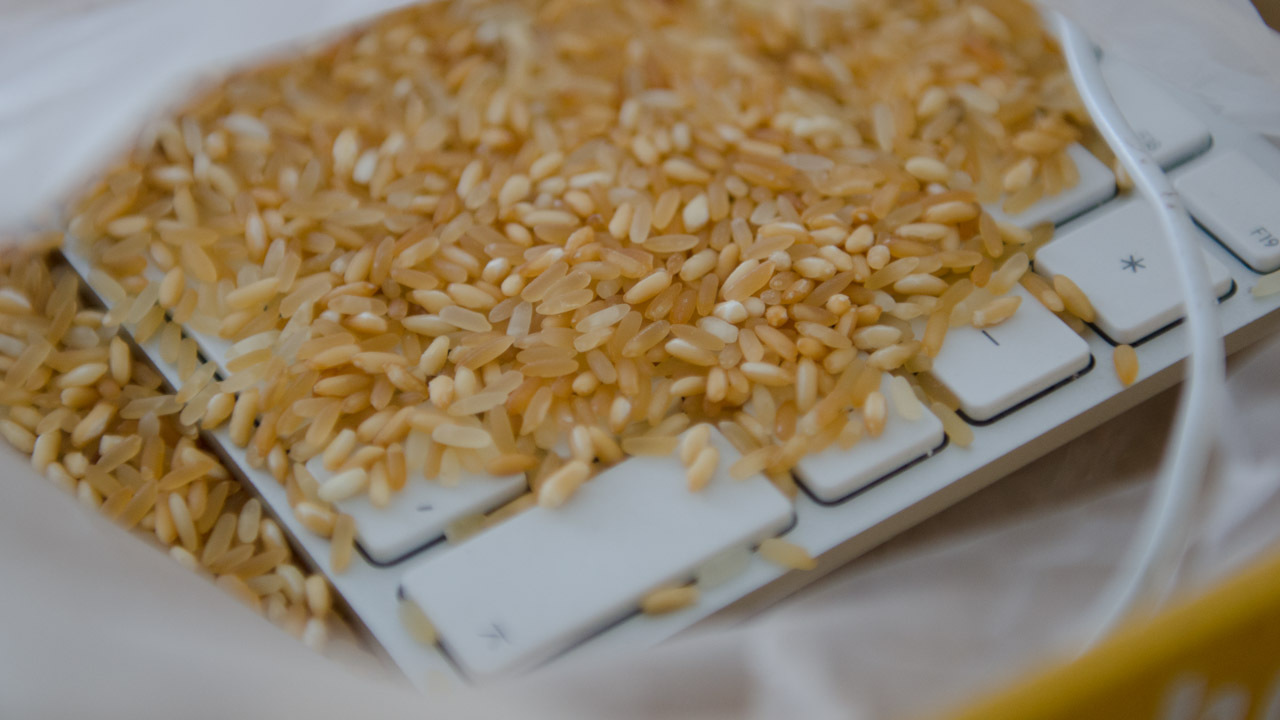

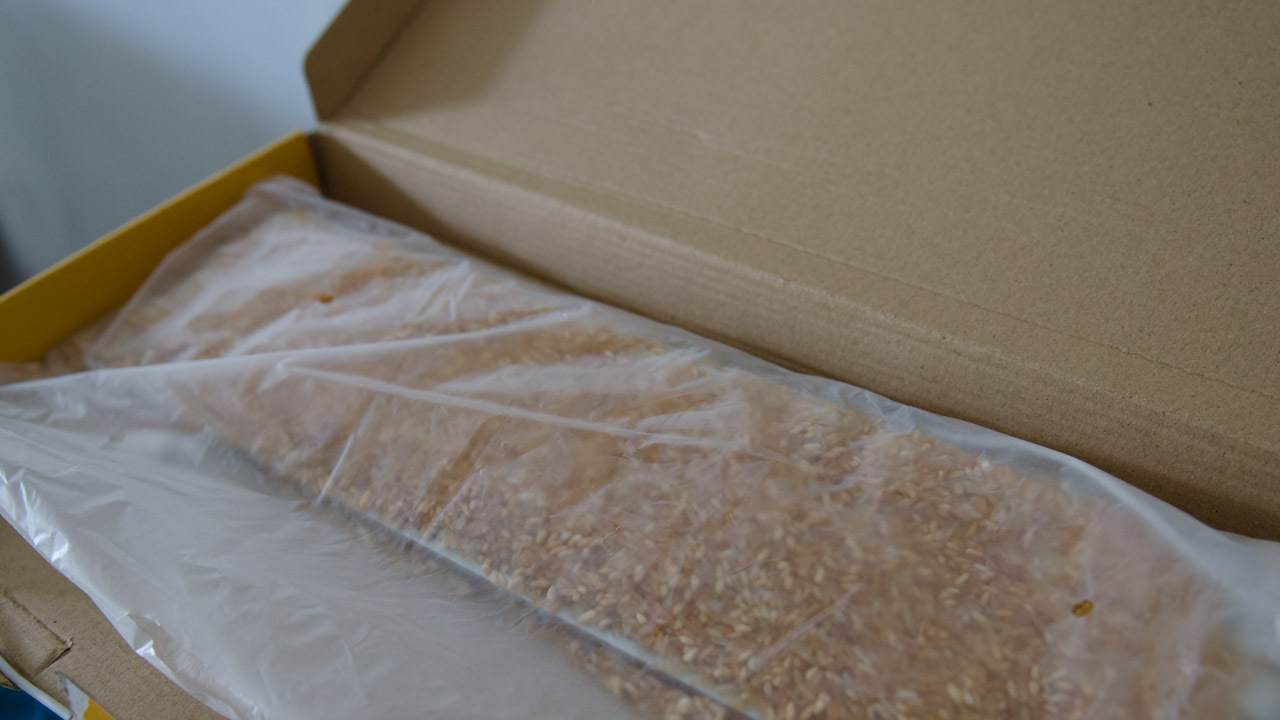
- We open our cache, check that there are no extra pictures under the keys.
So, after a day of “rice” drying, the keyboard, at the first connection and pressing the Caps Lock, joyfully winked with a green LED, and the keys rustled again with a pleasant, barely audible rustle ...
PS: I do not pretend to be the only true method of washing / cleaning / drying the keyboard - I did everything intuitively. Satisfied with the result.
I believe that when pouring clave with tea, coffee, milk, juice, cocktail, mineral water, beer (underline the necessary), the recovery algorithm will be the same. The only exception is carbonated drinks: they must be washed off immediately with any clean water until the acids contained in them begin to corrode the contact pads, otherwise you will probably have to say goodbye to your button friend.
There are tips for the very lazy - stick the keyboard in the dishwasher. I would not definitely recommend this method - the introduction of various detergents is unlikely to positively affect the electronic components and contact pads of the printed circuit board. But the taste and color ...
Photos of the disassembled devices are taken from here:
www.curiouschap.com/2007/11/curiosity-killed-the-apple-keyboard/comment-page-1
www.brunerd.com/blog/2009/08/25/apple-keyboard-a1243 -disassembly
